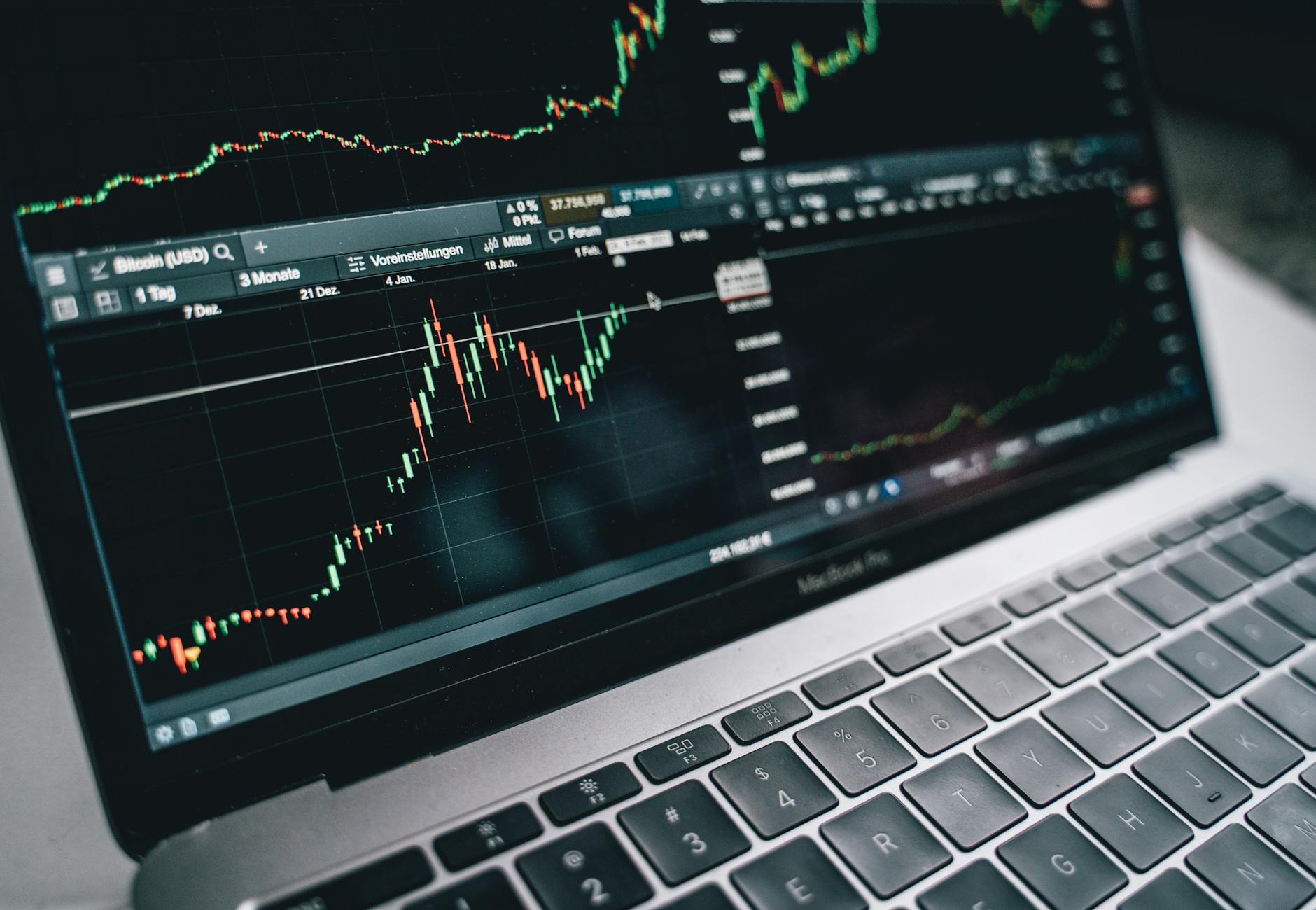Bitcoin Miner werden zu KI Giganten: Milliarden-Deals beflügeln AI-Aktien
- Get link
- X
- Other Apps

📌 Bitcoin Miners Transform into AI Giants: Multi-Billion Dollar Deals Fuel AI Stocks
⚖️ A quiet revolution is sweeping through the technology and finance sectors. Bitcoin miners, once solely dedicated to crypto operations, are rapidly evolving into key players in the artificial intelligence landscape. This transformation is driving impressive stock gains, multi-billion dollar contracts, and even geopolitical advantages, showcasing the power and flexibility of energy and computing infrastructure in a shifting market. For those seeking to understand why Wall Street and Big Tech are suddenly competing for mining capabilities, read on.
📌 The Spectacular Transformation of Bitcoin Miners
The Bitcoin mining industry is undergoing a radical reshaping. Following the halving of mining rewards in April 2024, profitability drastically decreased, forcing many companies to rethink their strategies. Companies like IREN, formerly Iris Energy, initially experienced a downturn but have since seen a dramatic turnaround. Since its strategic realignment and rebranding in November 2024, IREN stock has surged over 580%. Competitors such as Riot Platforms, TeraWulf, and Cipher Mining have also seen substantial gains, ranging from 100% to 360%, illustrating the market's strong reaction to this new direction.
🔗 The foundation of this success lies in a surprising strength: pre-existing, massive energy and cooling capacities. This infrastructure, built over years, enables a quick transition from blockchain processing to high-performance computing. While traditional data centers require significant time to expand, miners offer immediately available capabilities. Analysts view this as an exceptional example of entrepreneurial adaptability, with the industry pivoting from digital gold mining to providing critical AI resources.
Event Background and Significance
Bitcoin mining has historically been energy-intensive, requiring substantial infrastructure to solve complex cryptographic problems. The halving event in 2024, which reduced mining rewards, squeezed profit margins and forced miners to innovate or risk obsolescence. The rise of AI presented an opportunity to leverage their existing energy and cooling infrastructure for computationally demanding tasks, transforming miners from crypto-centric entities into broader digital infrastructure providers. This shift is critical because it diversifies revenue streams and aligns with the growing demand for AI computing power.
📌 Multi-Billion Dollar Contracts Validate Strategic Value
⚖️ A pivotal moment for the sector was the multi-billion dollar deal between IREN and Microsoft. The technology giant secured a $9.7 billion agreement for data center capacities in Texas. Additionally, IREN holds another $5.8 billion in contracts for GPU deliveries from Dell. These partnerships propel the miner into the forefront of global AI service providers. Industry observers interpret this as a clear message: the energy and infrastructure expertise of miners is a strategic advantage in the AI era.
HIVE has surged 283% this year to reach 23 EH/s of global Bitcoin mining capacity.
Now expanding 32.5 acres in New Brunswick to build a Tier III+ HPC campus capable of scaling to over 25K next-gen GPUs powered by renewables.
This is the next chapter of digital infrastructure pic.twitter.com/rbgZqIVFO3
— HIVE Digital Technologies (@HIVEDigitalTech) November 3, 2025
Other tech giants are also observing and acting. Amazon, according to industry sources, is exploring similar agreements with other mining providers. This is driven by the immense demand for graphical processors and computing power for AI models. Traditional data center projects cannot keep pace, requiring years for completion. Miners, on the other hand, already possess cooling, network connections, and experience operating high-performance systems. Investors are now valuing factors such as megawatt capacities and GPU allocations over Bitcoin hashrate.
Market Impact Analysis
⚖️ The market impact is substantial. Stock prices of mining companies transitioning to AI have seen explosive growth. This trend is expected to continue as AI demand increases, potentially drawing more institutional investment into these repurposed mining operations. However, increased competition and potential regulatory scrutiny could introduce volatility. The stablecoin, DeFi, and NFT sectors are indirectly affected as computing power and infrastructure costs influence the broader crypto ecosystem. The shift in investor sentiment towards miners is palpable, with more focus on revenue diversification and AI-related contracts.
📌 AI Demand Outstrips Classic Capacities
⚖️ The global AI wave is creating an unprecedented hunger for computing power. Models are becoming larger, markets are moving faster, and innovation cycles are shortening. Companies that secure capacity in time gain competitive advantages. In this environment, miners offer something rare: immediately available infrastructure at an industrial scale. The ability to scale quickly and operate GPUs efficiently makes them preferred partners for hyperscalers and AI startups.
Market strategists emphasize that this shift is just the beginning. Many miners are developing new sites or expanding existing facilities to meet growing demand. Network operators are observing increasing power requests from regions like Texas and North Dakota. This is creating a new power center for digital infrastructure in the U.S. that is no longer solely dependent on cryptocurrencies. For investors, the mining business has permanently changed, giving rise to a new, more robust business model.
📌 U.S. Policy Creates Competitive Advantages
⚖️ Besides economic forces, geopolitics also influence the market. The U.S. government recently blocked the export of high-performance Nvidia Blackwell chips to China, officially for security reasons, but practically to secure technological leadership. The timing, shortly before the meeting between Donald Trump and Xi Jinping, underscores the importance of the issue. China is losing access to state-of-the-art AI processors, while U.S. firms are preferentially supplied and immediately benefit.
BREAKING- Nvidia CEO Jensen Huang slammed U.S. export bans on AI chips to China, saying they wiped out Nvidia’s market share — “from 95% to 0%.” China will not loose but develop alternatives.
Trump is now destroying US companies & rebellion has started pic.twitter.com/vr96uf0GUb
— Megh Updates (@MeghUpdates) October 20, 2025
📜 For U.S. Bitcoin miners, this means a stable political environment and exclusive access to cutting-edge technology. In contrast, miners in China are grappling with crypto regulations and GPU scarcity. These structural differences create a clear advantage for American providers. Miners are thus evolving into indispensable pillars of the national technology strategy. Companies that once only generated tokens now supply critical AI infrastructure for international tech corporations.
Key Stakeholders' Positions
| Stakeholder | Position | Impact on Investors |
|---|---|---|
| US Lawmakers | Favoring domestic AI infrastructure | Benefits US-based mining firms |
| Tech Giants (Microsoft, Amazon) | Seeking AI computing capacity | Drives demand for miner services |
| Bitcoin Mining Firms (IREN, Riot) | Transitioning to AI providers | 📈 Increased revenue, stock growth |
📌 A New Digital Energy Economy Emerges
The industry stands at a historic turning point. Energy networks, chips, and data centers are becoming the most valuable resources in the digital world. Bitcoin miners were long considered niche players, but now they are showing how flexibly digital energy production can be deployed. Their transition from Proof-of-Work to AI computing power marks a new phase in which electricity and hardware are worth more than coins.
In the future, hybrid models are likely to emerge: mining when energy is cheap, AI operation when demand is high. Analysts expect further acquisitions, mergers, and investments in network and cooling technologies. For the market, this means stability and diversification, while technology companies receive urgently needed capacity. The transformation of miners shows: Whoever controls infrastructure controls the future of artificial intelligence.
📌 PepeNode: Mining Reimagined in the Age of AI and Crypto
⚡ While classic Bitcoin mining centers are increasingly being converted for the AI revolution, PepeNode takes a different path, returning mining to the users – virtually and playfully. Instead of hardware and electricity costs, there are digital server rooms, mining nodes, and upgrades with which to generate $PEPENODE. This creates a modern evolution of the mining principle: accessible, strategic, and without technical hurdles.
PepeNode shows that memecoins can be more than just a trend. Gamification creates a functioning mini-mining ecosystem that rewards activity and provides utility. Nevertheless, it remains a speculative coin: high chances, high fluctuations. Those who understand that humor, innovation, and risk go hand in hand here could be early adopters of an exciting new mining approach.
🔮 Future Outlook
⚖️ The future of Bitcoin mining is inextricably linked to AI. The market will likely see increased consolidation, with larger mining firms acquiring smaller operations to expand their AI capabilities. Regulatory clarity in both the crypto and AI sectors will be crucial, as governments grapple with the implications of these technologies. Investors should monitor policy changes, energy consumption trends, and technological advancements in both mining and AI to make informed decisions. Opportunities may arise in companies developing innovative cooling solutions or specialized AI hardware tailored for repurposed mining infrastructure.
📌 🔑 Key Takeaways
- The Bitcoin mining industry is undergoing a significant transformation, pivoting from crypto mining to providing AI infrastructure.
- Multi-billion dollar contracts with tech giants like Microsoft validate the strategic value of mining infrastructure in the AI era.
- Geopolitical factors, such as U.S. export policies, create competitive advantages for U.S.-based mining firms.
- A new digital energy economy is emerging, where energy networks and data centers are becoming increasingly valuable.
- Hybrid models combining mining and AI operations are expected to become more common, offering flexibility and diversification.
The metamorphosis of Bitcoin miners into AI infrastructure providers is not merely a trend, but a fundamental restructuring of digital resource allocation. We're likely to witness a convergence where energy grids, specialized chipsets (beyond GPUs), and advanced cooling technologies are managed under the umbrella of these newly minted "AI miners." This heralds an era where computational power is commoditized, and these firms could evolve into de facto AI cloud providers, rivaling the established giants. Expect the market to increasingly value companies based not just on hashrate, but on their capacity to deliver petaflops, secure AI contracts, and navigate increasingly complex regulatory landscapes.
- Assess the AI partnership portfolio of Bitcoin mining companies, focusing on the length and financial commitment of their AI contracts, to determine long-term revenue stability.
- Monitor the geographic diversification of mining firms, as political and regulatory risks vary significantly between regions, impacting operational stability and access to advanced technologies.
- Evaluate the energy efficiency and sustainability practices of miners; firms utilizing renewable energy sources are better positioned to address environmental concerns and attract ESG-conscious investors.
- Track announcements of new partnerships or expansions in AI computing capacity by mining companies as key indicators of growth and future profitability.
This post builds upon insights from the original news article, offering additional context and analysis. For more details, you can access the original article here.
- Get link
- X
- Other Apps

